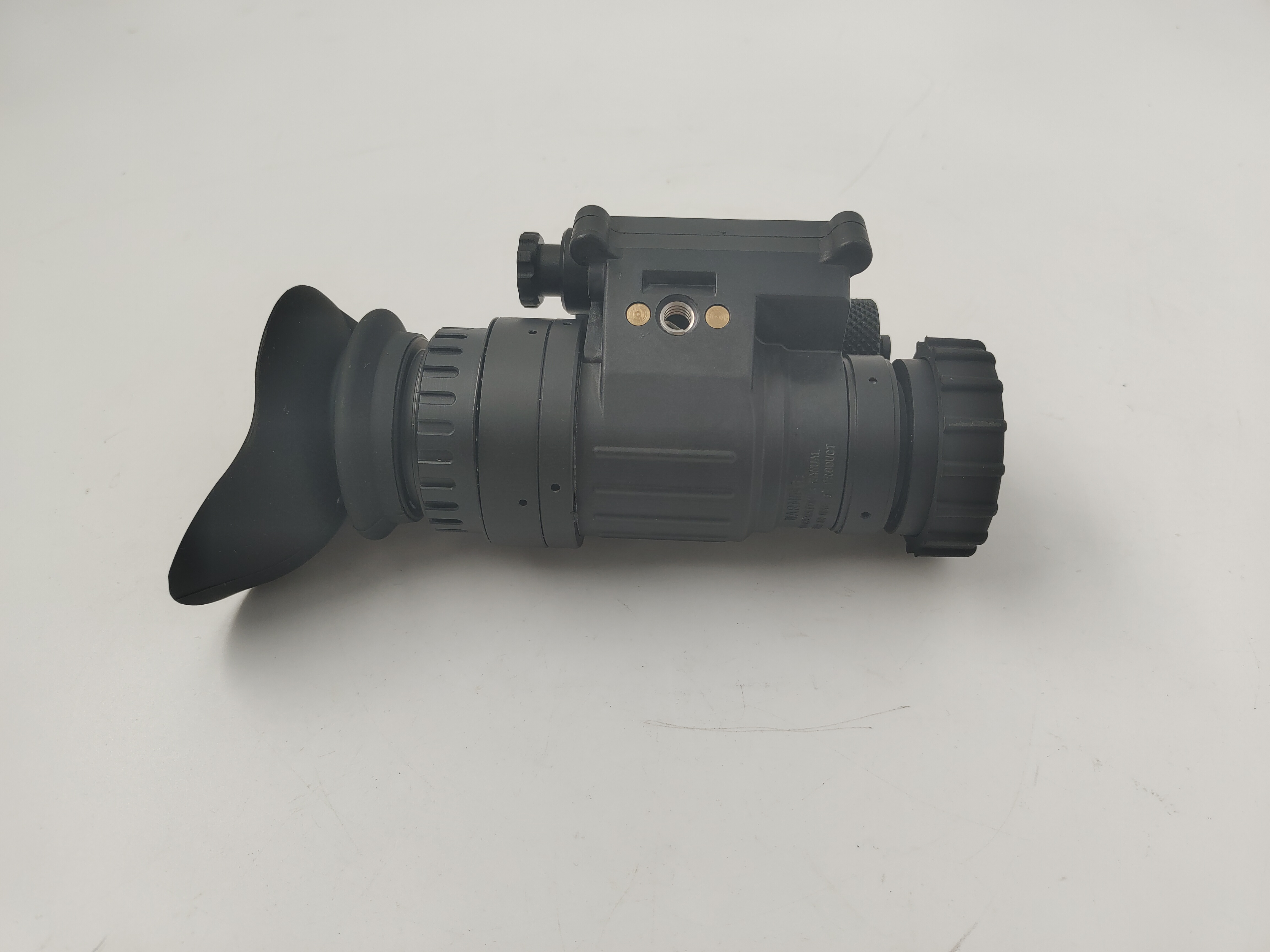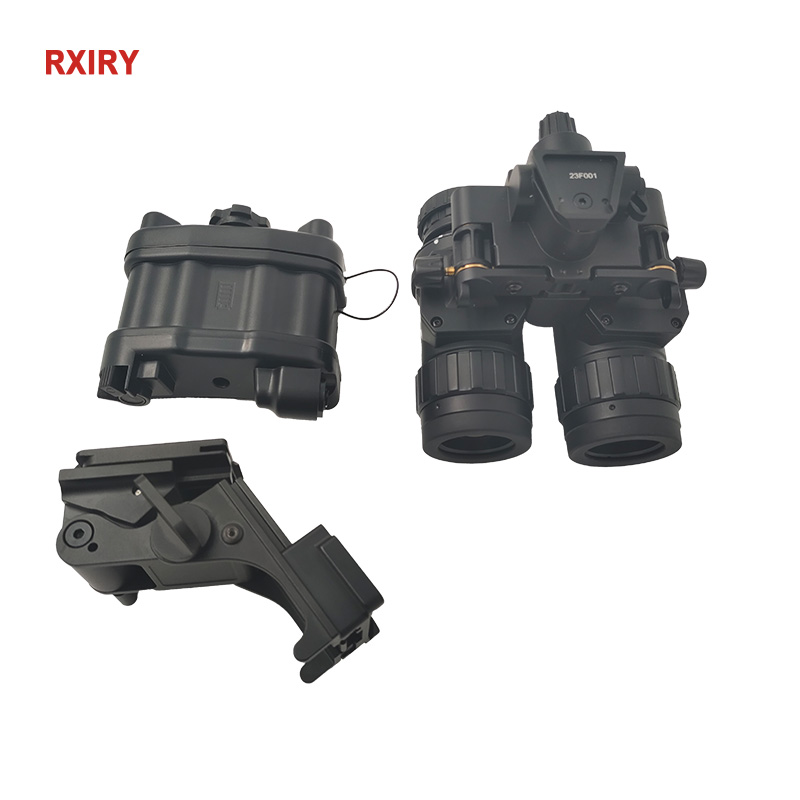
Since 2000, the digital surveillance market has developed rapidly. A number of emerging digital surveillance product manufacturers have been established in China. Night vision technologies represented by digital security products should develop rapidly in response to market demand. Low-light CCD camera can not meet the night vision requirements, making the monitoring system immediately "blindness" at night, the emergence of laser infrared night vision system to effectively make up for this loophole and become the leader of night surveillance. Today, laser infrared has been used for 10 years. Is laser infrared suitable for large-scale application in the security industry?
Night vision development: from halogen lamps to LED infrared lamps
LED infrared technology has been applied in the security industry since 2000 and has a history of 12 years. Although there are array infrared and dot matrix infrared and other derivative products on the market, ordinary LED infrared products still occupy most of the infrared market. What makes ordinary LED infrared products so successful in the security industry?
In the early days of the development of the security industry, people discovered that when night vision monitoring was needed, the first infrared product was a halogen lamp. In the process of using halogen lamps, the volume of the halogen lamp is found to be large, and the power consumption is also relatively large. Generally, the power consumption is more than 100 watts to 1000 watts. The working temperature is as high as 800° C., and the product is easily damaged. The service life is about 1500 hours. Every two months will have to be replaced. This short lifespan forces people to look for better alternative light sources.
The short life, large volume, high power consumption and high price of halogen infrared lamps are destined to be eliminated by the security industry. In this case, the LED infrared emission tube was introduced into the security industry. Compared with halogen lamps, LED infrared lamps have absolute advantages in terms of lifespan, volume, power consumption, price, etc. Therefore, LED infrared technology can be rapidly applied in the security industry, occupying almost all of the infrared market.

Problems with laser night vision
First, let's take a look at laser products. The entry threshold of laser products is high, and the production process is complicated. The products must be produced in a dust-free workshop to ensure quality. In addition, the production of high-reliability laser products also requires a group of professional laser technicians. After long-term practice accumulation, high stability and long life of products can be guaranteed.
The packaged LED product can be used, but the packaged laser tube cannot be used directly. The laser infrared illumination also needs to go through a process of “homogenization”, so that the laser projected onto the object is a surface, and cannot form a point. . That is, the energy distribution of the semiconductor laser beam in the vertical section is inhomogeneous, showing Gaussian distribution, strong in the middle, gradually weakening to the edge, or in a bright and dark stripe distribution. Therefore, the direct use of semiconductor lasers as an illumination source is not desirable (non-professional laser light manufacturers have appeared on the market, and there have been cottage-type laser lights, which have caused a lot of problems, and have caused users to have a negative impression on laser infrared lamps). It is necessary to evenly project this Gaussian light onto an object. This technique is called laser homogenization. Currently, only a few companies have mastered laser homogenization technology in China.
Due to the above reasons, there are many problems with the laser products produced by some small companies, such as the life expectancy of only three months, which has also damaged the reputation of laser products, resulting in misunderstanding that laser is not suitable for use in the security industry. Nowadays, the application of laser in the security industry is very small, and has not attracted the attention of the laser industry. It is considered that gaining access to the security industry will not be worth the candle. So far, except for one or two professional night vision laser manufacturers, there is no real laser company involved in security. .

Laser night vision needs to break through the bottleneck
1, face up to the problem
Current customers of laser companies entering the security industry have great misunderstandings about this product. For example, users of the security industry hope to determine the angle of the infrared light according to the angle of view of the camera lens to eliminate the phenomenon of the flashlight. However, the angle of the product produced by the laser manufacturer is very small. For example, a 50-meter laser lamp produced by a company in Shenzhen has only 10 degrees, and Infrared cameras are usually equipped with 8MM lenses. The field of view angle is close to 40 degrees. In the night vision surveillance, there is a flashlight phenomenon, which does not achieve the monitoring function. This makes the security industry disappoint with the laser products. Moreover, the volume of the laser product is too large and the power supply is not matched. It is difficult to adapt to the application of security.
Some companies that manufacture laser products recognize that laser is a special product and cannot be used on a large scale. Therefore, holding high profits of several tens of times is beyond the affordability of most customers. And these companies refused to share laser technology with security companies, also led to security companies can not quickly obtain technology and products.
2. Ideas need to change
In addition to the defects left by the traditional laser products, there are also some misunderstandings about lasers. It is believed that laser radiation damages the human body. In fact, laser light can be seen everywhere in people's lives. For example, laser copiers, printers, and laser scanners on supermarket checkout desks have all proved to be harmless to the human body and have good results and long life.
The laser is a point light source. It has an effect on people in the absence of treatment. If it is to become a product, it needs to be homogenized and expanded to make the energy distributed in a relatively large range. The laser energy per unit area is very high. Small, natural has no effect on people.
There is also a new saying that the speed of the laser in the beam expansion process is slow, and it takes 4 to 5 seconds to affect the normal use. This is also a misunderstanding of the use of laser. In order to ensure the service life of the laser, laser products generally have a delay circuit to start. The laser lamp requires a starting time of 1 to 5 seconds depending on the distance of the lighting distance. It is not necessary for the laser beam to be so long. time.

future development
The application of laser infrared technology in the security industry has many advantages. How to apply it quickly and widely in the security industry? Laser infrared technology should make breakthroughs in the product's effect, compatibility and price in order to occupy the market. Otherwise, the laser in the security industry can only be "mirror in the mirror, water in the moon," and it will become a way to drift away. customer".
About infrared night vision laser
The night vision device is divided into two types according to the principle: active and passive. The active night vision system uses non-visible light as the light source. It has two working modes: one is an area light emitter, such as an infrared lamp; the other is the use of a narrow light beam to control the scanning field of view, receiving reflected non-visible light in the The monitor screen displays images synchronously. This night vision device can also be called a night vision goggle such as infrared, ultraviolet, X-ray, etc. The passive night vision system uses the natural light such as the moonlight, the starlight, the sky glow, and the heat generated by the object itself to achieve the purpose of visual amplification through an image intensifier. This type of night vision instrument is also called the low light night. Sight or thermal imager.

 Since 2000, the digital surveillance market has developed rapidly. A number of emerging digital surveillance product manufacturers have been established in China. Night vision technologies represented by digital security products should develop rapidly in response to market demand. Low-light CCD camera can not meet the night vision requirements, making the monitoring system immediately "blindness" at night, the emergence of laser infrared night vision system to effectively make up for this loophole and become the leader of night surveillance. Today, laser infrared has been used for 10 years. Is laser infrared suitable for large-scale application in the security industry?
Since 2000, the digital surveillance market has developed rapidly. A number of emerging digital surveillance product manufacturers have been established in China. Night vision technologies represented by digital security products should develop rapidly in response to market demand. Low-light CCD camera can not meet the night vision requirements, making the monitoring system immediately "blindness" at night, the emergence of laser infrared night vision system to effectively make up for this loophole and become the leader of night surveillance. Today, laser infrared has been used for 10 years. Is laser infrared suitable for large-scale application in the security industry? 



